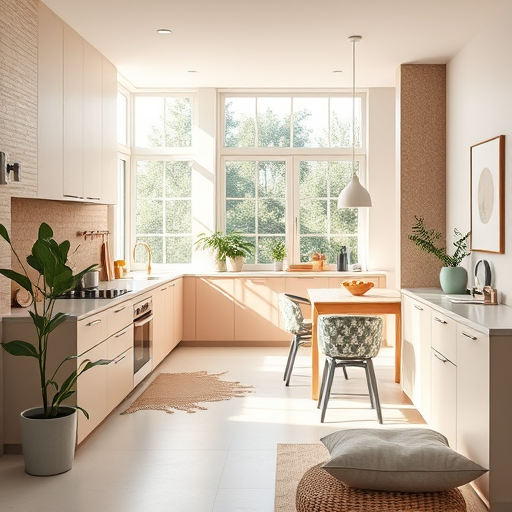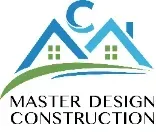
Kitchen Cabinets Dimensions: Complete Guide for Perfect Fit
What Are the Standard Kitchen Cabinets Dimensions and Why Do They Matter?
When planning a kitchen remodel or designing custom cabinetry, understanding kitchen cabinets dimensions is crucial. Precise measurements ensure that cabinets fit seamlessly within your space, maximize storage, and enhance the overall aesthetic. Standard sizes serve as reliable benchmarks, facilitating efficient planning and installation. However, recognizing when customization is necessary can make the difference between a clunky layout and a flawless kitchen. High-end kitchen remodeling projects often hinge on accurate measurements and tailored designs to match unique spatial requirements.
How Do Standard Kitchen Cabinet Dimensions Vary by Type?
Kitchen cabinets typically fall into three categories: base cabinets, wall cabinets, and tall cabinets. Each category has specific standard dimensions that influence overall kitchen design.
- Base Cabinets: Usually 24 inches deep and 34.5 inches high (excluding countertop). Widths range from 9 inches to 48 inches in 3-inch increments, allowing flexibility for different spaces.
- Wall Cabinets: Typically 12 inches deep and 30, 36, or 42 inches high, depending on ceiling height and design preference. Widths mirror those of base cabinets for uniformity.
- Tall Cabinets: Often 84 to 96 inches high, with widths varying from 18 to 36 inches. These units are ideal for pantry storage and can be customized for specific needs.
Understanding these standards is essential for coordinating cabinet sizes with your kitchen's layout and ensuring smooth operation. To find suitable options that balance accessibility and aesthetics, consider consulting with professionals experienced in local remodeling styles.
What Are the Typical Heights and Depths for Kitchen Cabinets?
Optimal kitchen functionality depends on proper cabinet dimensions, especially height and depth. Standard measurements serve as guidelines, but tailored adjustments may be required based on user preferences and space constraints.
- Base Cabinet Height: 34.5 inches, designed to be compatible with standard countertop thickness of 1.5 inches, resulting in a total height of approximately 36 inches from the floor to countertop surface.
- Wall Cabinet Height: Common heights are 30 inches and 36 inches to provide sufficient storage space while maintaining headroom and visual balance.
- Depth: Base cabinets are typically 24 inches deep, providing ample storage without protruding excessively. Wall cabinets are shallower, generally 12 inches deep, to allow for comfortable access and easy overhead clearance.
Properly measuring for these dimensions ensures that cabinetry aligns with your kitchen's ergonomic requirements, offering both convenience and style. For more insights into layout optimization, visit our kitchen layout optimization guide.
How Can Customization Improve Kitchen Cabinets' Fit and Functionality?
While standard kitchen cabinets dimensions facilitate straightforward planning, customization allows for precise fitting within irregular or challenging spaces. Custom cabinets can be tailored to specific height, depth, and width requirements, optimizing storage and workflow. For example, unique ceiling heights or room contours often necessitate bespoke solutions to prevent wasted space and ensure seamless integration with appliances and fixtures.
What Are the Key Factors to Consider When Planning Kitchen Cabinets?
Assess your kitchen's overall size, existing appliances, and user needs. Carefully measure the space, accounting for clearance, door swing, and accessibility. Use standard dimensions as initial benchmarks but remain flexible for refinements. Budget constraints, aesthetic preferences, and future needs should all influence final decisions.
Involving a professional contractor can streamline this process, ensuring measurements are precise and that the chosen cabinetry complements your home's style. To explore eco-conscious options, visit our eco-friendly kitchen remodels page for sustainable design ideas.
How Do I Choose the Right Material and Finish to Complement My Cabinets' Dimensions?
The material and finish of your cabinets are as important as their dimensions. Durable materials like hardwoods, veneers, or MDF with high-quality finishes can withstand daily use while enhancing the overall look. Properly sized and proportioned cabinets, combined with aesthetically pleasing finishes, create a cohesive and inviting kitchen environment.
Are There Specific Regulations or Building Codes Related to Kitchen Cabinets?
Local building codes and regulations impact cabinet installation, especially concerning clearance, fire safety, and accessibility. For example, the Americans with Disabilities Act (ADA) specifies certain dimensions for accessible kitchen cabinets. Ensuring compliance not only promotes safety but also simplifies permitting processes. Consulting local code guidelines and working with licensed professionals, like those at Master Design Construction and Roofing, ensures your project adheres to all relevant standards.
What Are Common Mistakes to Avoid When Planning Kitchen Cabinets?
- Ignoring Traffic Flow: Overcrowding space or poor placement hampers movement.
- Incorrect Measurements: Failing to measure accurately can result in ill-fitting cabinets.
- Overlooking Storage Needs: Not planning for future storage or specific items can lead to inadequate space.
- Neglecting Countertop Height and Clearance: Incompatible dimensions can affect ergonomics.
Addressing these issues early on guarantees a successful remodel that combines perfect kitchen cabinets dimensions with functional design.
How Can Professional Help Ensure Accurate Kitchen Cabinets Dimensions?
Engaging experienced architects and contractors helps you achieve precise measurements and optimal layout. They consider all factors—from architectural features to user ergonomics—delivering custom solutions tailored to your needs. At Master Design Construction and Roofing, we specialize in creating harmonious, functional kitchens that stand the test of time.
Frequently Asked Questions (FAQ)
Standard base cabinets are commonly available in widths ranging from 9 inches to 48 inches, typically increasing in 3-inch increments. These variations enable versatile kitchen layouts suited to different spaces and needs.
Yes, custom cabinetry allows for precise adjustments to height, width, and depth. This flexibility ensures a perfect fit, particularly in kitchens with irregular layouts or unique architectural features.
Properly scaled cabinets contribute to a balanced, functional layout that maximizes storage and accessibility. Incorrect dimensions can lead to cramped spaces, awkward door swings, or underutilized areas, undermining the kitchen’s efficiency and aesthetic appeal.
Start by measuring the available space carefully, considering appliance sizes and clearance needs. Use standard measurements as a guide, but customize based on your specific layout and preferences. Consulting with professionals can help optimize your design and avoid common pitfalls.
Conclusion
Understanding kitchen cabinets dimensions is fundamental to creating a kitchen that is both beautiful and highly functional. From standard sizes to custom solutions, the right measurements ensure that your space is utilized efficiently and reflects your personal style. Whether you're undertaking a minor upgrade or a complete remodel, leveraging expert advice and precise planning will lead to a successful project. For tailored design services, remember to contact Master Design Construction and Roofing in Rancho Cucamonga, where our experienced team is committed to turning your kitchen vision into reality.


























